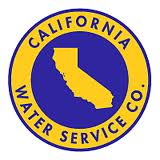California Water Service Company (Cal Water) recently secured grants to offset costs associated with regulatory compliance in Willows, California and fund an improvement project in Lucerne, California. As new regulations and aging infrastructure impact the cost of quality water service, Cal Water has aggressively pursued options to reduce rate impacts on customers. Securing grants for specific projects is one option that has proved to be successful, particularly for customers who win in two ways: improved water service without impacting their monthly bills.
The first Willows grant of $5 million, awarded by the Department of Water Resources from Proposition 50 funds, will be used to comply with the state’s new chromium-6 limit in drinking water of 0.010 parts per million, the first limit imposed in the nation. Cal Water’s entire Willows District is impacted by this new regulation. The grant funds will support a treatment technique identified by Cal Water’s research team as the most cost-effective solution using strong-base anion-exchange resin to remove chromium-6 from water.
An additional $175,000 grant from the Water Research Foundation will be allocated to additional research on reducing brine and waste created by chromium-6 treatment in Willows to maximize the efficiency of the process through brine reuse.
In a press release issued by Cal Water, President and CEO Martin Kropelnicki said, “We are pleased that the Department of Water Resources and Water Research Foundation have awarded us these grants to aid in research and removal of chromium-6 from the Willows water supply. This project will not only provide water to residents that meets the chromium-6 standard and help minimize the costs to our customers, it will also provide valuable information for other utilities in California facing this issue.”
A $136,000 grant, secured from the State Water Resources Control Board’s Division of Drinking Water, will be used for a two-phase improvement project in Cal Water’s Lucerne District. Clear Lake, the sole water source for the district, has been impacted by the drought with water levels threatening to drop too low for existing pumping equipment to work properly. Cal Water implemented a short-term solution by extending the depth of the pump two feet.
The long-term solution will involve designing and installing a floating intake pump structure to draw water from the lake to respond efficiently to fluctuating water levels. Allowing water to be drawn from various levels in the lake may reduce water treatment requirements and become more cost-effective in the long run.
Kropelnicki noted, “I am very pleased that our team consisting of local employees, engineers and water quality professionals were able to secure grant funding to enable us to make the necessary improvements to help ensure a reliable supply of water to our customers without a financial impact to them.”





